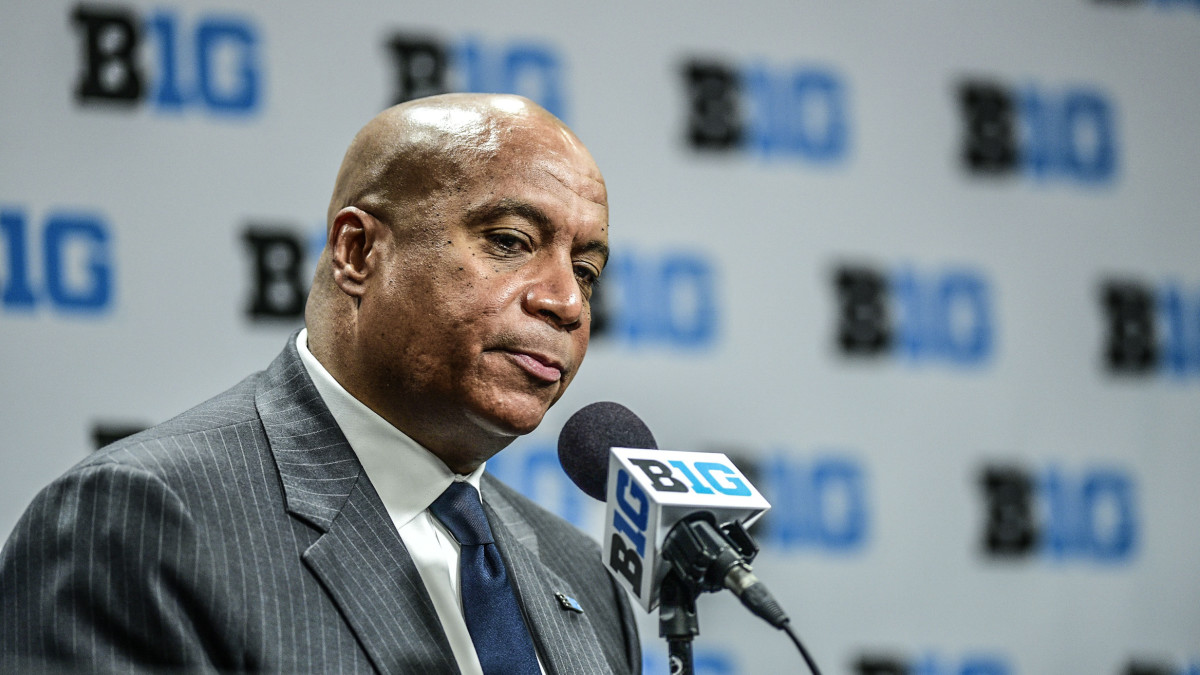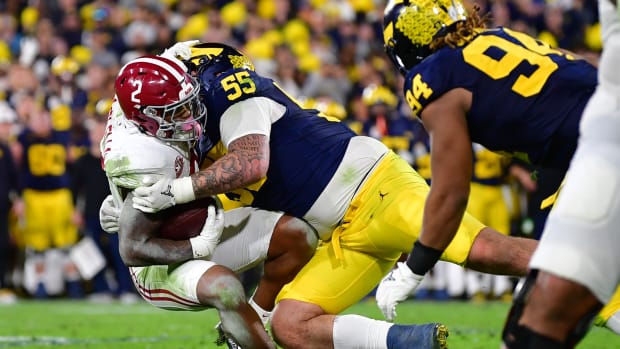Five Questions We're Asking About Michigan's Big Ten-Only Schedule

Following the July 9 announcement by the Big Ten that its 14 institutions would only play conference contests in 2020, many questions were raised. Here are five that I found myself immediately asking when thinking about the 2020 season.
1. When will the season start?
This is the first and most obvious question. Michigan was scheduled to take on Washington in Seattle on Sept. 5, but what about now? Will they still start on that date but against a different opponent? Will they try to push everyone back to buy more time?
With Washington being an out-of-conference opponent, along with Michigan's week two and week three games against Ball State and Arkansas State, it seems easy enough to just start the season during week four, when U-M hosts Wisconsin on Sept. 26. The problem with that is that not every Big Ten team had a three-week "buffer" against non-conference opponents to begin the season. Wisconsin and Indiana were/are set to square off on Sept. 4. Does that game still take place on that date or should it be shifted back a few weeks and how does that affect everyone else trying to get their schedules right?
There are just a lot of moving parts with rearranging a schedule this close to kickoff. It always seems so weird when schools announce home-and-homes series against schools 10 years out, but this is why. It's not easy to do at the last minute.
2. Will the order of the schedule change?
As mentioned above, it seems like the order is going to have to be modified. Not only because some teams were slated to begin conference play earlier than others, but also because TV networks and the schools are going to want to get marquee games in while they can.
What if the Big Ten or NCAA decides that the season can't continue on after three or four weeks and Michigan doesn't ever head to Columbus to take on Ohio State? If you think about it, the bigger games should be played first so that the networks get some bang for their buck and so the schools can rake in some cash.
I don't like the idea of Michigan playing Ohio State in September, but I like that better than the idea of them not playing at all.
3. How will byes be handled?
This is also interesting but really hard to answer because we just don't know what COVID-19 numbers will look like in a month or two. If the Big Ten decides to just shift the season back three or four weeks since there are no non-conference games, then some of the flexibility of suddenly having three open weeks is gone. Instead, maybe the late-season games should be moved to the beginning of the season. Maybe play two or three games and then slide in a conference-wide bye in order to take inventory.
I don't know if that's doable, but with a few opens weeks to play with, plans can be made and situations can be reassessed as the season goes on. To me, that makes the most sense and would be a very proactive way to try and complete the whole season.
4. When will Michigan play Ohio State?
As our own Michael Spath outlined the other day, over the last 70 years the earliest the Michigan-Ohio State matchup has taken place is Nov. 17. That could definitely change this year.
As I suggested above, moving late-season games to the front of the schedule would allow the season to start on time, but provide flexibility with byes. A bye every two or three weeks would allow decision makers to see where each program is with its COVID numbers and make ongoing decisions throughout the year.
Could that result in a September edition of The Game? We shall see. It would be weird, but it's better than not getting to it in late-November.
5. Will the schedule stay at nine games?
This one seems set already, but maybe not, and nothing is official yet. Obviously teams are used to playing 12 games, and financially that's what everyone wants, but it doesn't seem plausible or possible.
The whole reason for creating a conference-only schedule is to create control within the conference. The primary issue with playing interconference games is that with a variety of conferences comes a variety of safety standards, testing standards and travel standards.
With the Big Ten in charge, of the entire season, they can create on set of rules and regulations to test, report, travel and play. That wouldn't be possible in a Big Ten vs. Pac-12 matchup.
It does seem possible that the Big Ten could decided to crank the schedule back up to 12 games — after all there are 14 teams in the conference — but things are just not trending in that direction. Right now the schedule is nine games long, and I'd bet on it staying there, but maybe they'll try to add in some other conference games that weren't already on the docket.





